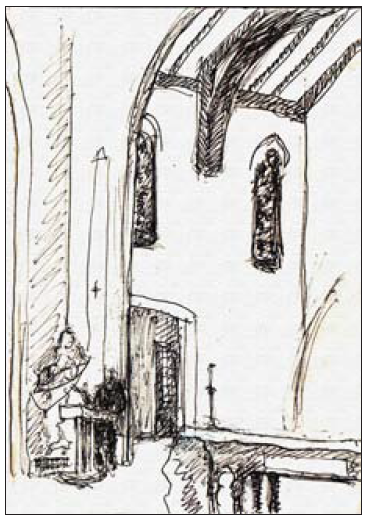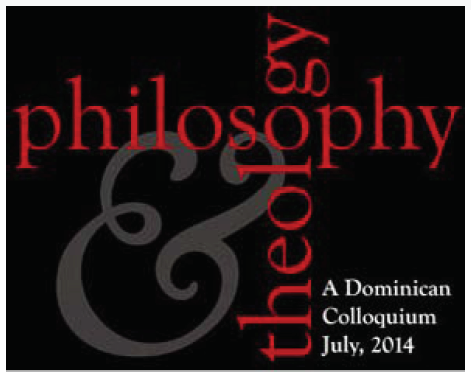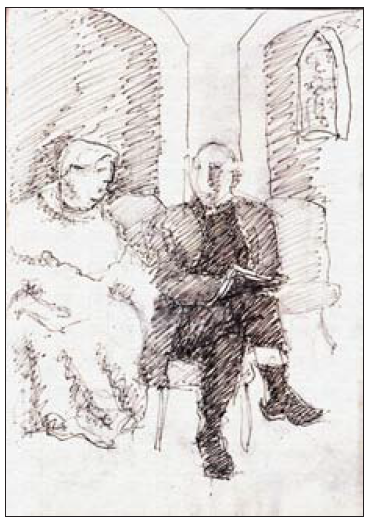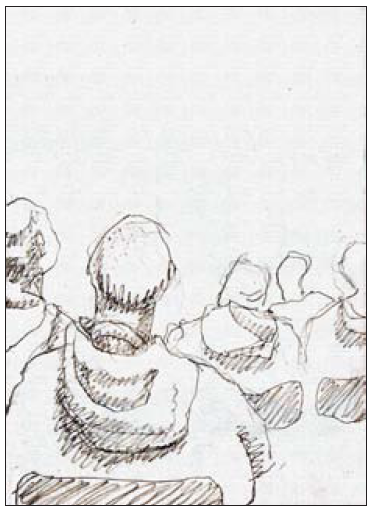After her first thunderously successful book, The Twilight of “Saigon,” whose modest circulation was bought up entirely at its presentation, Yulia Valieva began to develop a new, even grander plan: under one academic cover, a collection of names, fates and voices of representatives of the so-called second culture, those not included in primary bases of historical and cultural research material. Although it would be too early to consider the work on the Sound Archive project fully complete today, its first two releases allow us to speak of an accomplished fact.
Since the appearance of the first Faces of St. Petersburg Poetry: 1950-90s. Autobiographies. Authors’ Readings, published in 2011, enough time has passed that the volume, including audio recordings of authors, has become a prized rarity in many parts of the world. Less than a week after the presentation of the second volume, On the History of Unofficial Culture and the Contemporary Russian Diaspora: 1950-90s, fortune granted us an opportunity to meet with the project’s author, compiler and editor-in-chief, Yulia Valieva, to talk about what paths led her plans to take shape and proceed.
The Russian diaspora — how central is this topic to your strategy, if a strategy exists? Do you have your own strategy regarding the line of “unofficial culture and the contemporary Russian diaspora” that you are currently working on?
At first I studied the Oberiuts. My theme was the Oberiuts. Then it gradually grew — through Twilight of “Saigon” and so on — into the study of the unofficial culture of the fifties through the eighties. And the majority of participants in an unofficial culture turned out to be somehow connected with foreign countries. Involuntarily, it turned out that the space expanded and shifted abroad.
This line evolved naturally: someone from the seventies generation ended up in England, someone in Australia, someone in America… I must say that when I got to Boston, it was very difficult for me to find Russian-speaking poets. For a long time I tried to find, say, Naum Korzhavin, who lived nearby, in Boston. I only succeeded after the third month — despite the fact that he is in the Harvard collection, which has many holdings from him. In this case, no one knows who lives next to them! It really surprised me. I thought that it should be the other way around: such a somewhat limited space, willy-nilly, ought to have brought people together, created something unified. That turned out to be not quite the case.
That is, something originally unified appeared to have disintegrated?
Since I was already studying a certain aspect of the first wave of the Russian diaspora — Vladislav Khodasevich and others — I had my own idea of how it developed in the twenties, at the beginning of the thirties. But that mainly concerned Europe. Closer contacts, journals that brought together all participants. And in America, I couldn’t immediately figure out how everything worked. For me, the space required complete rediscovery.
Did you go there looking for a specific range of names?
At first, I was exclusively interested in archival materials related to the Russian diaspora, materials preserved there from the first wave of emigration. I went to study in the archives on a Fulbright grant — in the Harvard University library and in the Hoover Archive in California. But it turned out to be less easy to turn to the modern diaspora.
But was that also your errand?
Yes, of course. I wanted to make recordings for the St. Petersburg archive, because the intention was namely to collect a sound archive — first of St. Petersburg poetry, of all those poets who willingly or unwillingly ended up abroad.
From whom and by what criteria was this circle determined for you? What were your criteria for specific names? It all started with the first wave — and then?..
Since I had to deal with the informal culture of the seventies, I knew about home salons and circles, including philosophical circles, collections, that existed in Leningrad in the sixties and seventies, and even earlier. One of these circles was at Vadim Kreidenkov’s — Vadim Kreid’s. There were also the Ivanov brothers — Konstantin and Mikhail Ivanov. All this was interconnected. And in America, I wanted to find those who were involved in these circles. Ask them questions, take notes… So I knew some names in advance and wanted to get in touch with these people. Especially from the seventies. However, from the point of view of research, I felt closer to the formalists, who had no concept of there being poets of a first rank or second rank. For me, the completeness of all kinds of individual styles, literary schools and groups was important. Therefore, I wanted to collect as complete information as possible about, among other things, Russian poets in America. Of course, I hardly met with everyone, only with those whom I managed to get to know during my stay.
How does the study of informal culture relate to this task? Do representatives of these circles equate to the entire unofficial culture?
Do you mean in poetry? If we consider the history of the development of unofficial culture in general in Leningrad-Moscow circles, there’s the Lianozovo group in Moscow, the philological school in Leningrad. That is still the fifties. But from the philological school — Lev Losev, who ended up in America, Vladimir Uflyand, Mikhail Eremin, Mikhail Krasilnikov — that is a separate circle. The Lianozovo team is another circle. Those are poets and artists. The fifties were a time of a powerful combination of poetry and approaches to poetry, including through the visual. A synthesis. I began with that and then moved on chronologically.
Did you have a sense of relevance, acuity?
I am a very subjective person. It is difficult for me to make any generalizations.
And if it’s just personal, subjective for you?
Since at first I was engaged in theories of meaning — relative to the Oberiuts and in general the theory of meaning as such: not just any text, but texts with a semantic breakdown — I was least interested in the biographical layer. A biography, as I saw it, was the least interesting for me when studying a text, when studying a particular author. But then I changed radically, paradoxically. I realized that it would be very difficult to study a certain era, especially the layer of unofficial culture — which was not revealed in published texts, in biographies, and so on. There was initially no factual material. A researcher would read certain meanings into it. In Russia, studies on the literature of unofficial culture began to appear, whose authors understood neither the mechanisms nor the figures, did not know any of the literary circles and had virtually no information. And without that foundation, it’s simply impossible to proceed. Therefore, it’s necessary to collect an oral, one might say, history in which eyewitnesses speak. But it shouldn’t be skewed. Material about Saigon, about Saigon times — that’s a whole network, diverging in all directions. A gigantic context. And here it is impossible to imagine only one kind of positive point of view. You always need to consider many personal stories, destinies that add up together. But each fate comprises not only a family, how a person was brought up, his exclusively subjective experiences. Subjective experiences were also yielded by the context, including the Soviet one, which it’s impossible to do without. Therefore, the context itself with its multiple meanings, even if absolutely primitive, should be revealed through the direct evidence of eyewitnesses. That was a very important motivation for me.
Is it possible to evaluate the final work with the material as a kind of collection of raw materials for further development?
The fact is that the archive itself can be expanded, of course.
Is that work you would like to do?
Well, actually, I’m doing it. I myself was the initiator. That is, no one’s giving me any such task.
How do you manage to identify a certain active line, if it can be put like that?.. Because there is so much material… And so many systems of evaluation!..
Of course. Even about one event. For example, an important story for the seventies. On one of the anniversaries of the Decembrist uprising, going out onto Senate Square with poetry. This was important for a whole circle of poets — the circle of Julia Voznesenskaya. There were Elena Pudovkina, Boris Kupriyanov, Cheygin, and other poets. Going out onto Senate Square and reading poetry. Everything turned into a very hard to organize event, with arrests, with a police dragnet, that is, with a whole mythological shell. I interviewed many of the participants in this event. Of course, accounts diverged: who came, who participated, how the event took place, and even what was on the poster made by two dissident artists who went to the square and because of which everyone was arrested as a result and the event acquired such a political context. So even the inscription on the poster itself also varied from story to story. Therefore, it was important in this case to publish all these stories, despite the repetitions and so on. Otherwise, only one of the points of view would be heard, and everything would be tucked away under it. It was important to present different voices. No way around that. Only by the collision of different voices, in such cases, can any objectivity be observed.
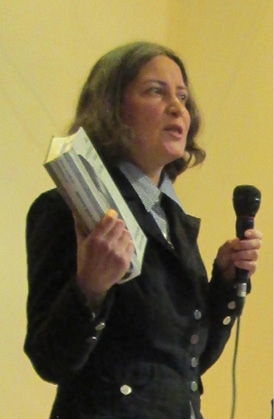
Yulia Valieva at the presentation of her book On the History of Unofficial Culture and the Contemporary Russian Diaspora (Photo: J. Manteith)
Have you included your own commentary?
No. In Twilight of “Saigon,” I specifically refrained from comments. This was especially important for such characters as Victor Kolesnikov, “Wheel,” from Saigon. Many people know him. I recorded his story about how he grew up with his brother in Sortirovochny, how they played in the sandbox with the medals that his mother had received for wartime service. A rather heroic story: how he grew up, how his health problems started… Really a big story. And then he ended up in the “Daring Club” at the Palace of Pioneers, where he went to steal something — there are a lot of shiny things in the Anichkov Palace. Just went in to steal something. But!.. Someone spotted him and asked where he was going. He randomly saw a sign, “‘Daring Club,” and said he had come there to register. So he was spared, and somehow it turned out that he was in a circle of poets, many of whom later became unofficial poets. It is unclear who later dragged whom into Saigon, because he was in the center of Saigon, and the poets were around him. Later he represented himself as a fighter pilot, or said he could repair boots or acquire books. It is very difficult to comment on such figures. In general, about fate… How can there be commentary about fate?
Would it be right to say that what you create has its own distinct literary value?
It’s hard for me to talk about literary value here. For me, the value is that the author is presented as such, that his voice sounds. Firstly, through his autobiography. An autobiography is a selection of milestones for you. They can be on different levels: external boundaries, encounters with some text, experiences, etc. Maybe exclusively internal milestones. People choose for themselves. And then the text itself, the voice — a unity of the author’s self. It seems to me that this is very important — when the author is represented through himself, in the fullness of his own authorial self.
Is there a feeling that these “unofficial” authors remain in some ways voiceless, with undeveloped aspirations?
I don’t know if I’ve understood your question correctly, but take the generation of, say, the seventies. Now, it’s said that a dividing line was 1991, when censorship was abolished and everyone could start publishing. But there was a very strange effect. Not everyone was able to realize themselves afterward. For example, the poet Elena Pudovkina, whose only published book was released in Australia, which she reached on a cargo ship. She sailed for six and a half months, stopping at all possible ports. And there in Australia, during the first wave of emigration, a religious society had developed. At its own expense, it published this one little book by Elena Pudovkina. And from the nineties to the present, no more of her books have been published. That is, when the era associated with economic opportunities began, far from everyone managed to make use of them, oddly enough. Many, on the contrary, went down the drain, because the values they — Krivulin’s circle — lived in the seventies, in the nineties were destroyed. That’s the paradox.
What attracted you to the Oberiuts?
Most of all I have studied Alexander Vvedensky; I did a dissertation on Alexander Vvedensky. The thing is, since childhood, I’ve felt concerned by the question of the randomness of textual elements. Many have this problem with Pushkin. That is, it happens that there is a choice between Pushkin and Lermontov. Not everyone chooses Pushkin; some prefer Lermontov. There’s a dilemma… I couldn’t accept Pushkin because of his, as it seemed to me, random rhyming, which rounds off the narrative and for me destroys the whole secret of poetry and its mechanisms.
So it all started with the question of what, in fact, is the random element that does not give meaning to a text but kills it? This interest grew into a study of which text is meaningless or, conversely, meaningful. After all, Vvedensky called himself an authority of nonsense — his pseudonym was “The Authority of Nonsense.” His text has an extremely interesting structure, but what is the text’s meaning? In the twenties there were different concepts of the meaning of a text. Units held the greatest interest. What is the main thing in a text: words, sentences, paragraphs? Or is the whole text one single meaning? Where do you find it? In the twenties, even a little earlier, in the tens, the concept of “phoneme” was discovered — seemingly a linguistic concept. Some writers decided that the phoneme is a unit of meaning. And they began to write phonemic poems. Alexander Tufanov wrote the book “Toward Transrationality (Zaum), or a study of consonant phonemes. ” He decided he had discovered a new principle for creating text — a text understandable for all peoples. Consisting of only phonemes. Phonemic music is clear to everyone. An avant-gardist, he felt driven to create his own crazy concept and, to do this, study all consonant phonemes of the most ancient languages of the world. He deemed these to be Chinese and English, and derived a very beautiful classification. If there are seven colors of the rainbow, seven tones in music, then you can also classify consonant phonemes from the moment of the first coalescence of the Earth. According to his concept, the initial sound controls the word. If we compare, in Chinese and English, all the words that begin with the sound “b”, this is the first link in our mental understanding of movement. All “b” words are associated with the idea of movement. He wrote whole cycles of phonemic poems.
These atoms of meaning that writers were looking for then are like blood groups: invisible, and suddenly established; something disconnecting, something unifying. Everything seems alike, yet everything is different. These units of meaning later gave rise to the Oberiuts, among others. Everything was complicated for them by an attempt to identify the existing causal relationships in the world. This was partly due to a Buddhist perspective. On the other hand, a Gnostic perspective. Through interest in why a text becomes meaningless, is not understood or not accepted, does not elicit an emotional response. Each person has different criteria.
At the time, I conducted an experiment with high school students. It was interesting that students in a system of formal norms — of literary language and so on — felt that for them the Vvedensky poem I read them was a banal text. The criterion of meaninglessness for them was the criterion of banality. You can’t say that Vvedensky is banal. But for them he was. For each person, the text is meaningless in a different way.
Did you have a feeling of liberation from cliches when you discovered the Oberiuts?
Well, of course! It was just that when I was a schoolgirl, the Oberiuts were not yet published widely, and they circulated in samizdat. I well remember a samizdat Kharms, this thick. It served as an ottoman, that is, was sat on — just in case suddenly someone came who shouldn’t see it.
Was this a liberation from an ideological burden?
I don’t think there was a connection with ideology.
That is, on the contrary — in that these works were nominally useless?
I can’t say I looked at these texts from that angle. Back then, of course, with no experience in reading absurd texts, when you came across a new text that you had not previously encountered, each was full of its own kind of holes. I had a friend, an artist who worked as a sentry in the Russian Museum — he sat and guarded. And at that time everyone was reading Kharms. And he opened Kharms and said: “How can you read this! Everything is immoral here.” Later, as a philologist, I realized that everything verges on the ridiculous and terrible in the Oberiuts and Kharms, and this initial emotion of the text is difficult to isolate. Not everyone can understand it in texts that unfold at a junction of opposites: things that aren’t accepted, that violate taboos, and so on.
Is your perception of this literature changing?
To the extent that I approach this literature as a researcher. When studying Vvedensky, the question for me was precisely about the meaning, so when I discovered for myself how that works, I calmed down about it. And then other points began to interest me.
Now that your field of study of modern literature has expanded, how do you imagine the place of such literature among other things, in the body of literature as a whole, say?
If we’re talking about the Oberiuts, they gave a very powerful impetus. But how did it happen? After all, the first adult publications of Kharms and Vvedensky took place in 1967, one text was published. And before that, during their lifetimes, they had published only two poems. And that’s it. Therefore, how could the generation of the fifties get acquainted with their texts? That really interested me. Kharms died in a prison psychiatric hospital. That was in 1942, January. Vvedensky died at about the same time, en route after an evacuation from Kharkov. That left only the Oberiut Igor Bakhterev, who lived to the age of ninety-six. Then there was Yakov Druskin, a friend and ally of Kharms and Vvedensky, who remained alive. He was the one who retrieved a suitcase with Kharms’ papers from Mayakovskaya — from Nadezhdinskaya — street during the blockade. Yakov Semenovich kept this suitcase and opened it only later. And after all, during the fifties era, nobody knew this except a very narrow circle of people. The texts had not yet been published, had not been transferred to an archive. There was a group of people who read them to each other. Such an archaic way of transmitting information, in fact, worked then because the texts were transmitted to writers who themselves could not be published. So there was a convergence of completely closed systems, and this astounded me: neither Kharms nor Vvedensky had been published yet, and the young poets of the so-called second culture themselves had no outlet. But this meeting took place, and it gave a powerful impetus. Well, of course, an important system of synthesis had an impact: in the fifties and sixties, the Silver Age heritage was just opening up. And for the poets of the seventies, the legacy of acmeism and symbolism was extremely important. This made for a very interesting combination: the Oberiuts on the one hand — and the poetry of Akhmatova, Tsvetaeva, in no way connected with the poetry of the Oberiuts. This led to outpourings in completely new directions.
Like a torch now being passed to a new generation?
Well, that sounds overly pathos-ridden. Of course, that’s one way of putting it, but some other way would probably fit better.
Well, let’s say, there was a transmission of one of the possible lines, one of the approaches to literature.
Yes, one of the lines comes from the Oberiuts. This line resulted in there now being directions like sound poetry, visual poetry, but the connection is only indirect. The Oberiuts are more directly connected with transrational poetry, with absurdist poetry from the fifties; it’s connected with the direction of concrete poetry. The line of the Oberiuts has been preserved, but not in its pure form, because everyone took something different from them. Many emphasize that the Oberiuts were just playing a game and focus only on this, believing that the successors of the Oberiuts are the Moscow conceptualists, say. But that isn’t true. Yes, Kharms, say, has a game. Vvedensky makes completely different poetic moves that cannot be reduced only to play.
Can it be considered a coincidence that schools of a fairly experimental bent arose precisely in St. Petersburg, with its classical foundations?
I think this, of course, is more than a coincidence.
Are you going to continue your work in the direction you have so successfully begun?
I don’t know anything, I don’t know anything!..

